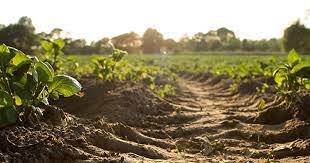The Importance of Healthy Soil for a Sustainable Future
Healthy soil is the foundation of sustainable agriculture and a thriving ecosystem. It is a complex mixture of minerals, organic matter, water, air, and living organisms that work together to support plant growth and maintain environmental balance.
One of the key benefits of healthy soil is its ability to retain water and nutrients, providing essential support for plant roots. This not only leads to higher crop yields but also helps prevent soil erosion and nutrient runoff, which can have detrimental effects on water quality.
Healthy soil is also teeming with beneficial microorganisms such as bacteria, fungi, and earthworms that play crucial roles in nutrient cycling, decomposition, and pest control. These organisms help break down organic matter, release nutrients for plants to absorb, and suppress harmful pathogens.
Furthermore, healthy soil acts as a carbon sink, sequestering carbon dioxide from the atmosphere and helping mitigate climate change. By maintaining healthy soil practices such as minimal tillage, cover cropping, and composting, we can enhance carbon sequestration and reduce greenhouse gas emissions.
Unfortunately, modern agricultural practices such as excessive tillage, chemical inputs, and monoculture cropping have led to widespread degradation of soil health. Soil erosion, compaction, loss of organic matter, and decline in biodiversity are some of the consequences of poor soil management.
To address these challenges and ensure a sustainable future for agriculture and the environment, it is essential to promote practices that enhance soil health. This includes adopting agroecological approaches such as conservation agriculture, agroforestry, crop rotation, and integrated pest management.
By investing in healthy soil management practices and prioritizing soil conservation efforts, we can improve agricultural productivity, protect natural resources, enhance biodiversity, and promote resilience to climate change.
Healthy soil is not just dirt beneath our feet – it is a living ecosystem that sustains life on Earth. Let us recognize the importance of nurturing our soils and working towards a future where healthy soils support thriving ecosystems and sustainable food production for generations to come.
Unlocking the Secrets of Fertile Earth: A Guide to the Healthiest Soil for Gardening and the Key Principles and Practices for Optimal Soil Health
- What is the healthiest soil for gardening?
- What are the 5 principles of soil health?
- What are the 3 things to improve soil health?
- How can you tell if soil is healthy?
What is the healthiest soil for gardening?
The healthiest soil for gardening is rich in organic matter, well-structured, and teeming with beneficial microorganisms. A balanced soil texture that includes sand, silt, and clay particles allows for good drainage while retaining moisture and nutrients. Additionally, a pH level that is slightly acidic to neutral is ideal for most plants to thrive. Adding compost, cover crops, and organic mulch can help improve soil fertility and structure over time. By cultivating soil that is alive with diverse microbial life and nutrient-rich organic matter, gardeners can create a thriving ecosystem that supports healthy plant growth and yields bountiful harvests.
What are the 5 principles of soil health?
The five principles of soil health serve as guiding pillars for sustainable soil management practices. These principles include minimizing disturbance to the soil structure, keeping the soil covered with vegetation or mulch to protect it from erosion and maintain moisture levels, maximizing biodiversity within the soil ecosystem to support beneficial microorganisms and nutrient cycling, keeping living roots in the soil year-round to promote organic matter decomposition and carbon sequestration, and integrating crop rotations and diverse plant species to enhance soil fertility and resilience. By adhering to these principles, farmers and gardeners can improve soil health, increase agricultural productivity, and contribute to a more sustainable environment for future generations.
What are the 3 things to improve soil health?
Improving soil health is essential for sustainable agriculture and ecosystem resilience. There are three key practices that can help enhance soil health: first, implementing crop rotation to diversify plant species and break pest cycles, which promotes nutrient cycling and reduces soil erosion. Second, practicing cover cropping to protect the soil surface, increase organic matter content, and improve soil structure. Lastly, reducing tillage or adopting minimal tillage techniques helps preserve soil structure, minimize disturbance to beneficial soil organisms, and retain moisture. By incorporating these practices into soil management strategies, farmers and gardeners can foster healthier soils that support productive crops, biodiversity, and environmental sustainability.
How can you tell if soil is healthy?
Determining the health of soil involves assessing various physical, chemical, and biological indicators. Healthy soil typically exhibits characteristics such as a dark, crumbly texture, indicating good organic matter content and structure. It should also have a balanced pH level, adequate nutrient availability, and proper drainage to support plant growth. Biological signs of healthy soil include the presence of earthworms, beneficial microorganisms, and diverse plant life. Conducting soil tests for nutrient levels, observing plant growth and diversity, and assessing water infiltration rates can help determine if soil is healthy and capable of sustaining vibrant ecosystems.

